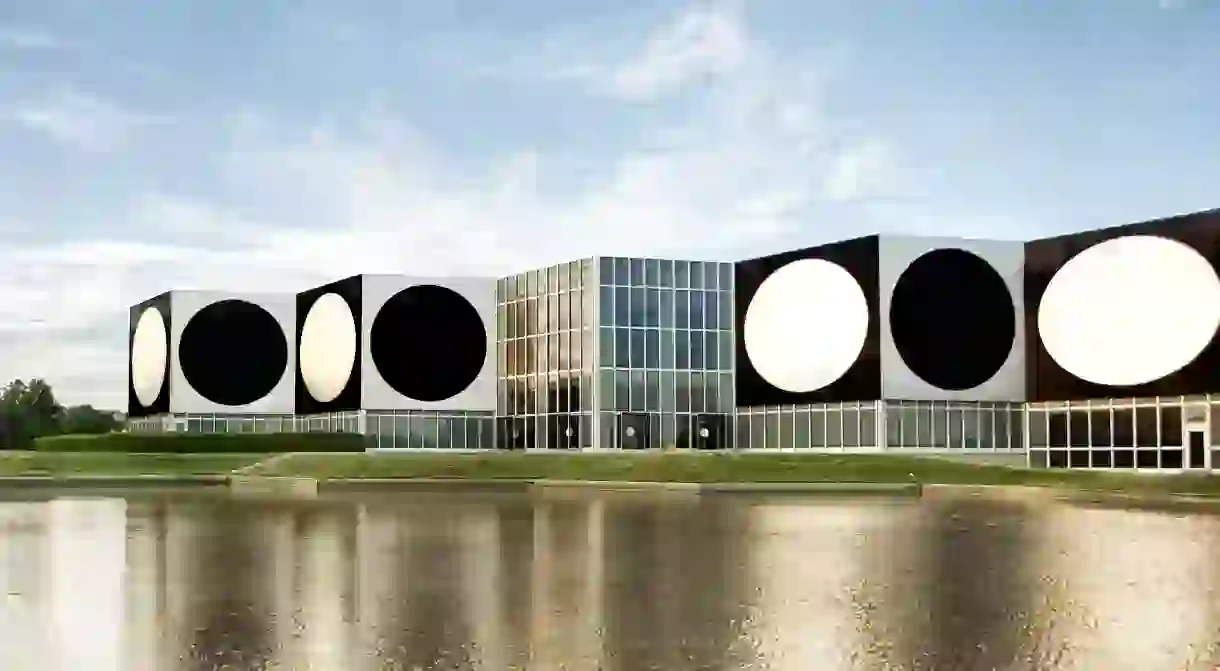How Provence's Vasarely Foundation is Pushing the Boundaries of Avant Garde Art

Politically progressive and an advocate for art being accessible to everyone, Victor Vasarely was an artist who pushed the boundaries of modern art. In the 1960s, he became known for ‘optical art’—where the viewer participates in the art and interprets the images as they see fit, and where there is a ‘suggestion’ of movement without actual movement.
Victor Vasarely, an artist discovering Bauhaus
Vasarely was born in Austria-Hungary in 1906. As an adult, he briefly studied medicine before enrolling in a Budapest art school in 1929. The school was called the “Bauhaus of Budapest” and taught him about the German Bauhaus techniques of famous artists like Kandinsky and Klee. Bauhaus means “construction house” in German, and its theory mixed art with architecture. It was a merger of beauty and design utility, giving rise to buildings and products that were both beautiful and practical. Vasarely discovered abstract art here and began to think about art that was more collective and more inclusive—art that changed to adapt to the modern world around it. The Bauhaus Movement became associated with progressiveness, and it came to be seen as a threat to many European governments in the changing political landscape of the early 1930s. Vasarely then moved to France to work and live.

Optical Art is born
Vasarely went through several artistic periods and played with his visual styles. He had a black & white period (1954-1960) where he began to work with art that appeared to move as viewers looked at it. The ‘Planetary Folklore’ period during the 1960s played with geometric shapes that ‘fit into one another and switch places as you look at them’. During the late 1960s and into the 1970s, he worked with hexagons. It was during this time—when he exhibited in New York’s Museum of Modern Art—that he became known as the granddaddy of ‘optical art’. Vasarely’s reputation was born.

Vasarely chose Aix-en-Provence to build his foundation
Vasarely wanted to build a foundation to showcase his work, but he was undecided between Avignon, Marseille, and Aix. He eventually settled on Aix because of its history, world-renowned festivals, its network of motorways, and because he had a lot of support from the city’s administration. In 1974, the administration donated land for him to build the foundation in the style he wanted. He said, ‘for an avant-garde institution, I had to build an ultra-modern building’. Perhaps it was his love of another painter and French icon that made the decision for him. Vasarely says that a defining feature of why he chose Aix was his ‘own personal admiration for Cézanne. The Foundation is located in the ‘Jas de Bouffan’ area, where the great founder of contemporary plastic arts himself lived’.

The Foundation was built specifically to showcase the art
Because of the care taken in the design of the building, the idea is that visitors discover the art without being overwhelmed. That they move from one art piece to the next, but they do so without getting lost with the materials and colours. The building is made up of 16 hexagons that form seven ‘cells’ to house Vasarely’s 42 architectonic installations. It also has a conference room and auditorium to teach and discuss art. The building is said to be a ‘Lumino-kinetic’ sculpture—a synthesis between architecture and plastic art—giving the visitor a series of playful optical illusions.

A visit to the Foundation
Each room is based on a theme—the Kinetic Room, the Tapestries Room, Planetary Folklore, etc. dedicated to specific installations. The installations are huge—measuring six metres wide by eight metres high (19.7 feet wide by 26.2 feet high)—so that visitors will become immersed in the shapes, volumes, colours, optical illusions, and convoluted perspectives. It means that Vasarely achieved his biggest ambition: to make artwork accessible and open to all so that ‘without even noticing, the visitor is actively participating in their visit’. This isn’t a place for contemplating artwork in revered silence; it’s the opportunity to view pieces that are meant to be playful and inventive. A must-see.
Opening hours: daily from 10 am to 6 pm
Fondation Vasarely, 1 Avenue Marcel Pagnol, Aix-en-Provence, France +33 (0)4 42 20 01 09













